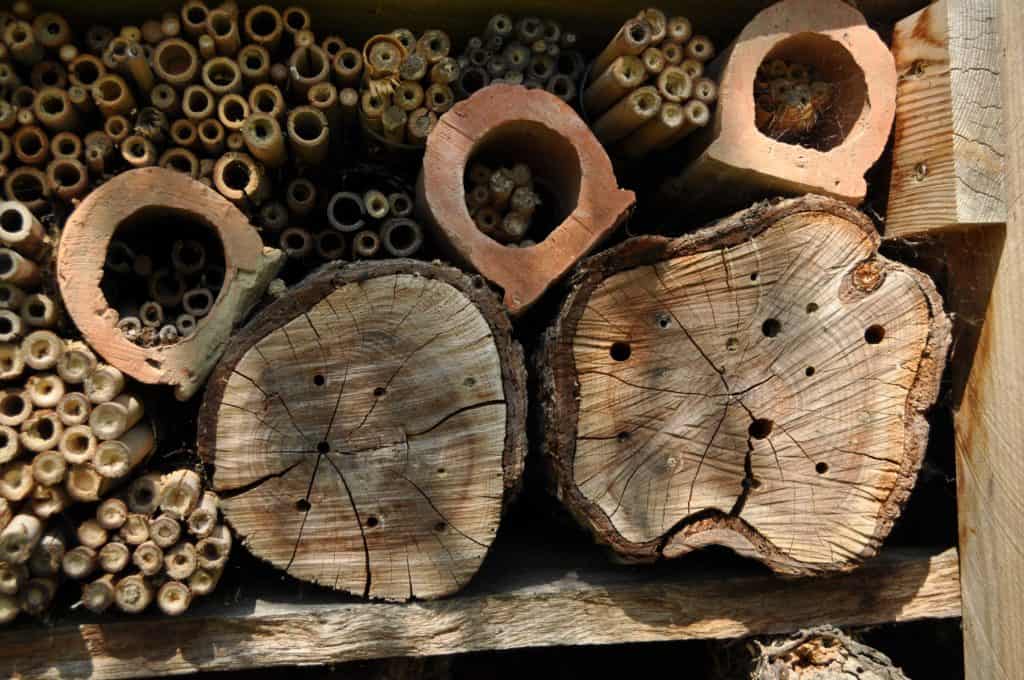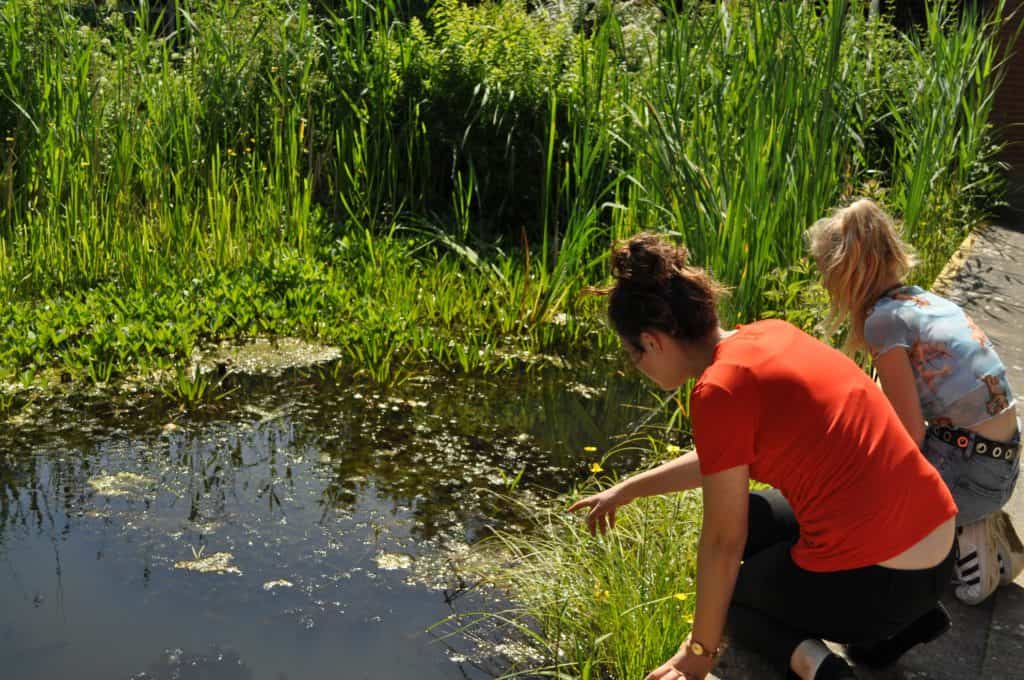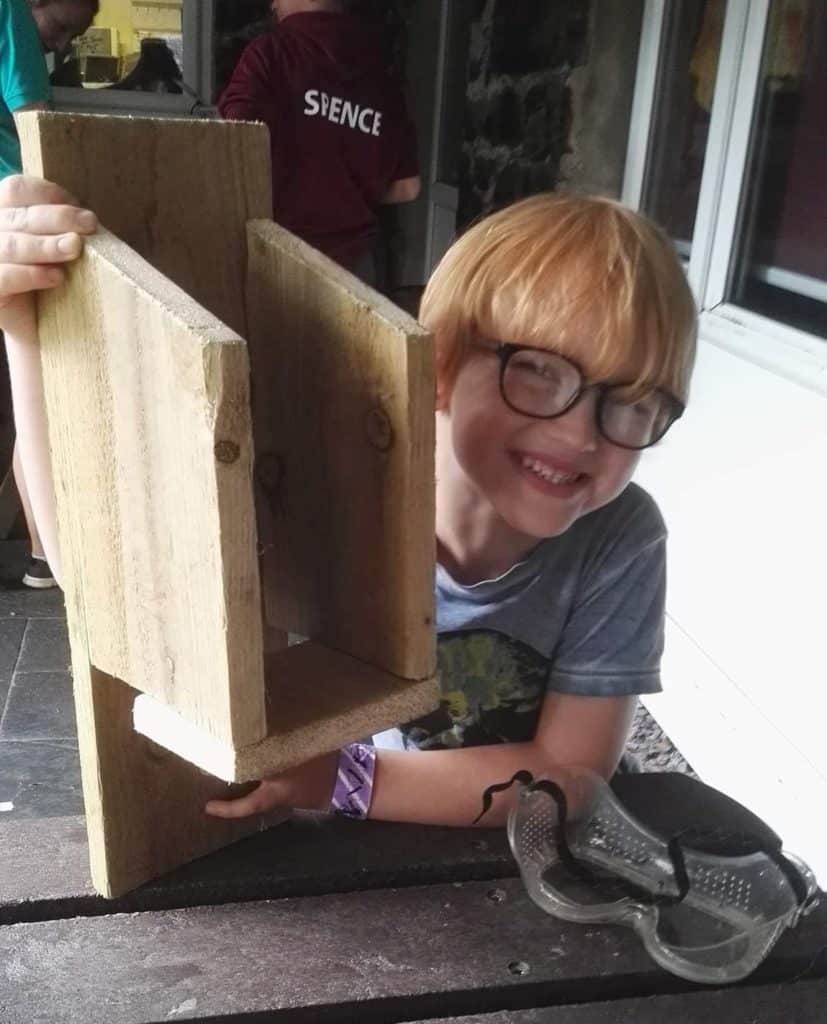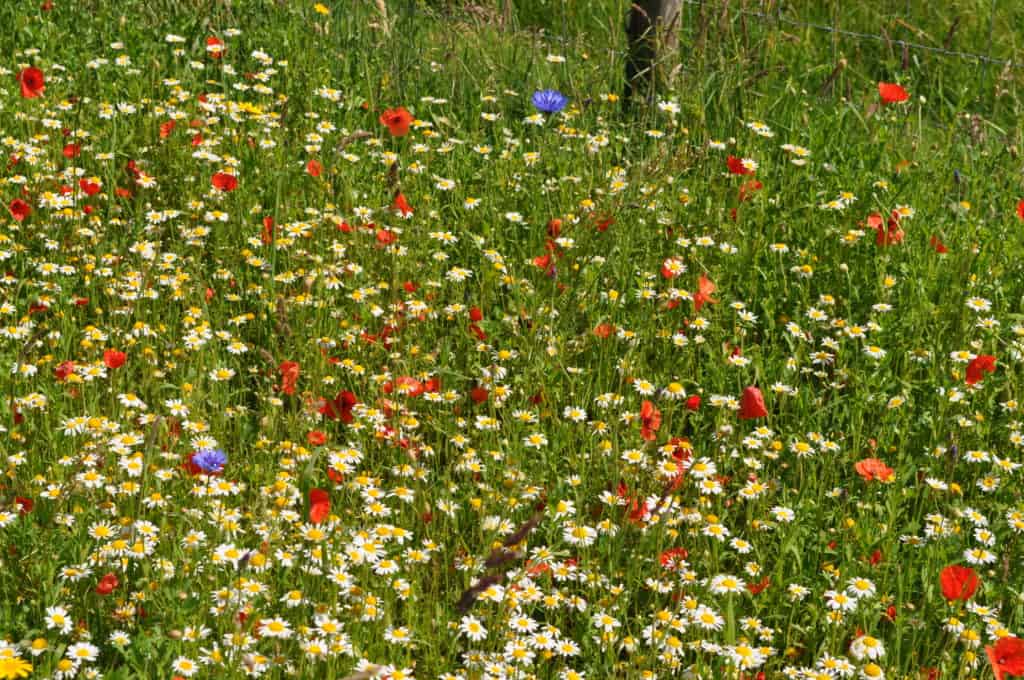Charlie Bell, experienced biodiversity trainer and all-round outdoor enthusiast, has outlined her five top tips for encouraging a greater diversity of wildlife into gardens at home and school.
It comes after a 2019 report on the State of Nature in the UK highlighted a continued decline in the abundance of terrestrial and freshwater species living in local habitats, despite continued efforts by various environmental organisations.
In sharing her handy hints Charlie, who is our BioLinks Project Officer based at FSC Preston Montford in Shrewsbury, has tried to keep her ideas simple, fun and creative to encourage more of you at home to get involved and support our local wildlife
1) Build a bug hotel or rock pile
Small insects love nooks and crannies which they can crawl into, hide-out in and live in and the best way to create little areas rich in biodiversity is to build a bug hotel from bits of wood, bark, leaves, bamboo canes, twigs or anything else you have lying about the garden. You can do a similar thing by creating a rock pile in the garden. You can make them as big or small as you like but one thing is for sure, the insects will love their new home.

2) Add a water bath or water hole
Many garden species love a little bit of water and creating a small pond area, water hole or even adding a bird bath can encourage different wildlife into your garden. Birds, frogs and newts all love a bit of splashing about. Remember though, if you’re creating a water feature to attract wildlife make sure it has shallow edges so creatures can get in and out easily.


3) Put up a bird house or butterfly home
Take a trip to your local garden centre and there will be an abundance of bird houses or butterfly houses to choose from and the majority are not that expensive. Alternatively, it’s pretty easy to make a basic home for butterflies or birds out of a few bits of wood, some nails and some waterproof material. You might need a grown-up to help with the hammering but it will be well worth the time.
4) Get planting
Planting wild flowers in pots or borders is a great way to attract more bees into the garden and they need very little attention other than a bit of water every now and again. Lots of shops stock packets of mixed wildflower seeds so you don’t even have to worry about making sure you are selecting the right species to plant. The bees will love the nectar-rich plants and your garden will be full of colour.

5) Don’t be too perfect
Whatever you do to encourage wildlife into your garden, whether it be creating wildflower zones, water features or man-made insect homes don’t try and be too neat and tidy. The most beautiful, wildlife-rich areas in the natural environment are the ones that are not over-manicured and are left without too much human intervention.
